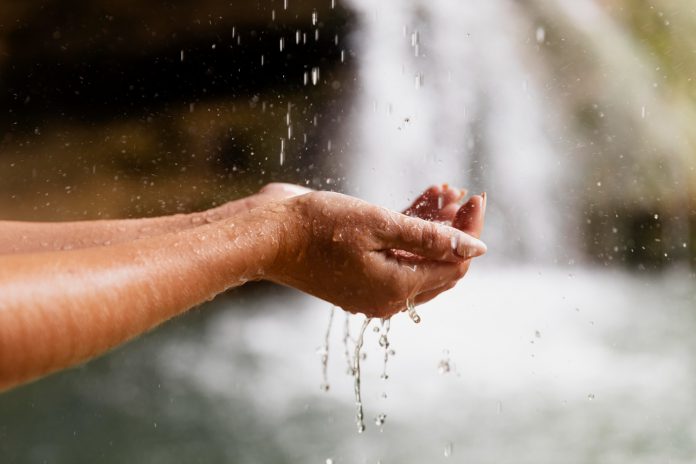Rainwater is a precious resource that has been collected and used by civilizations for centuries. However, the question of whether rain water is clean and safe to drink has been a subject of curiosity and concern. In this article, we will explore the cleanliness and safety of rain water as a drinking source, learn in detail about its composition, possible contaminants and purification methods.
Understanding Rainwater
Composition of Rainwater
Rainwater is composed primarily of H2O molecules, making it one of the purest forms of water available in nature. It falls from the sky as rain when water vapor condenses in the atmosphere and forms droplets which turn into rain.
Natural Purity
Rainwater is naturally soft and does not contain minerals commonly found in groundwater or tap water. This characteristic makes it a preferred choice for various purposes including drinking.
Rainwater is an attractive natural resource that provides many benefits. Now, let’s delve deeper into the potential pollutants that may be in rainwater.
When You Shouldn’t Drink Rainwater
Rainwater passes through the atmosphere before reaching the ground and during this process, it can pick up various pollutants from the air. Therefore, it is important to exercise caution and avoid drinking rain water in certain situations. Here are some scenarios when you should avoid consuming rain water:
- Near Hazardous Sites: Rainwater collected in areas near hazardous sites, such as radioactive zones like Chernobyl or the areas around Fukushima, should never be consumed. These sites can leach harmful substances into rainwater.
- Proximity to Industrial Areas: It is not advisable to drink rainwater falling around chemical plants, power plants, paper mills or other industrial facilities. Pollutants released from these sites can pollute rainwater and make it unsafe for consumption.
- Runoff from Surfaces: Rainwater that has run off from surfaces such as plants or buildings can carry toxic chemicals from these structures. Avoid drinking rainwater that has come in contact with such surfaces.
- Puddles and Dirty Containers: Similarly, avoid collecting rainwater from puddles or using dirty containers for storage, as this can introduce impurities into the water.
Rainwater That Is Safe for Drinking
In most cases, rainwater is safe to drink. In fact, it serves as the primary water supply for a significant portion of the world’s population. The levels of pollution, pollen, mold and other contaminants in rain water are generally low, often even lower than what is found in your public drinking water supply. However, there are a few things to keep in mind:
- Rainwater may contain low levels of bacteria, dust and sometimes insect fragments, so it is advised to treat it before drinking.
Making Rainwater Safer
To enhance the quality of rainwater and make it safer for drinking, you can take two key steps:
- Boiling: Boiling rainwater is an effective way to eliminate pathogens and make it safe for consumption.
- Filtration: Using a home water filtration pitcher can help remove chemicals, dust, pollen, mold, and other contaminants from rainwater.
When collecting rainwater, it’s essential to do so carefully:
- Collect rainwater directly from the sky into a clean bucket or bowl.
- Ideally, use a disinfected container or one that has been run through a dishwasher.
- Allow the rainwater to sit for at least an hour, allowing heavy particulates to settle at the bottom.
- Alternatively,
You can filter the water through a coffee filter to get rid of any particles or debris.
- While not mandatory, refrigerating rainwater can inhibit the growth of most microorganisms it may contain.
What About Acid Rain?
Most rainwater is naturally slightly acidic, with an average pH of about 5.0 to 5.5. This acidity is caused by the interaction between water and carbon dioxide in the air and is generally not harmful. Indeed, the pH of drinking water is rarely completely neutral because of the dissolved minerals it contains.
To provide some perspective, coffee made with neutral water has a pH of about 5.4, while orange juice has a pH closer to 4. In fact acid rain, which you should avoid drinking, is more likely to occur around active volcanoes. Otherwise, acid rain is not a significant concern for rain water consumption.
Contaminants in Rainwater
Airborne Contaminants
Rainwater can carry pollutants from the atmosphere including dust, pollen and pollutants. These contaminants can affect its quality and safety for consumption.
Roof and Collection System Contaminants
Surfaces that rainwater touches, such as roofs and collection systems, can contain impurities. Dust, leaves and bird droppings can accumulate on roofs, potentially polluting the water.
Microbial Contaminants
Rain water can harbor microorganisms like bacteria and viruses. These microorganisms pose a health risk if they are not properly treated before consumption.
Conclusion
If collected and treated properly, rainwater can be a clean and safe source of drinking water. Its natural purity and softness make it an attractive choice for those concerned about the quality of their water supply. However, precautions must be taken to deal with potential contaminants and ensure that rainwater is purified before consumption.
FAQs
- Is untreated rainwater safe to drink?
- No, untreated rainwater may contain contaminants that can be harmful. It should be properly filtered and purified before consumption.
- Can I drink rainwater directly from the sky?
- It is not advisable to drink rainwater as it falls, as it may have picked up impurities from the atmosphere. It should be collected and treated first.
- Are there any health benefits to drinking rainwater?
- Rainwater is naturally soft and free from certain minerals, which may be beneficial for individuals who prefer low-mineral water.
- What are the common contaminants found in rainwater?
- Common contaminants in rainwater include dust, pollen, bird droppings, and microorganisms like bacteria and viruses.
- How can I start harvesting and purifying rainwater at home?
- To start harvesting and purifying rainwater at home, consult with a professional to design an effective rainwater harvesting system and ensure proper purification methods are in place.


